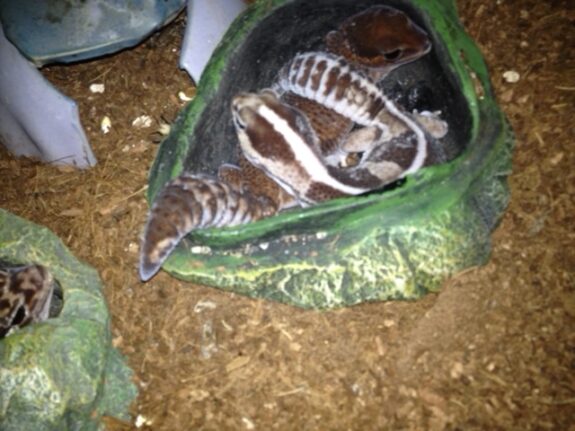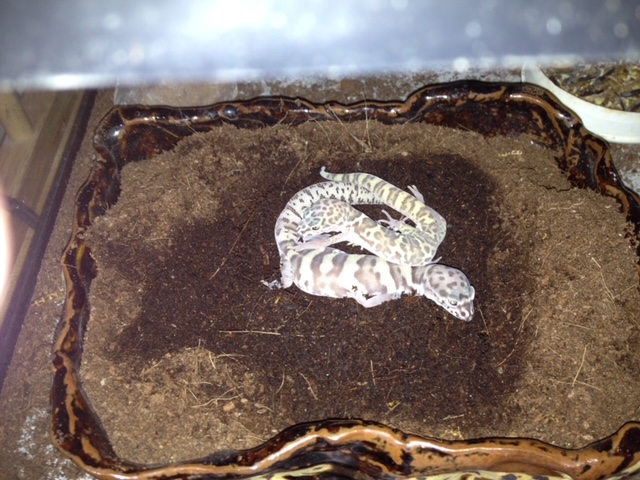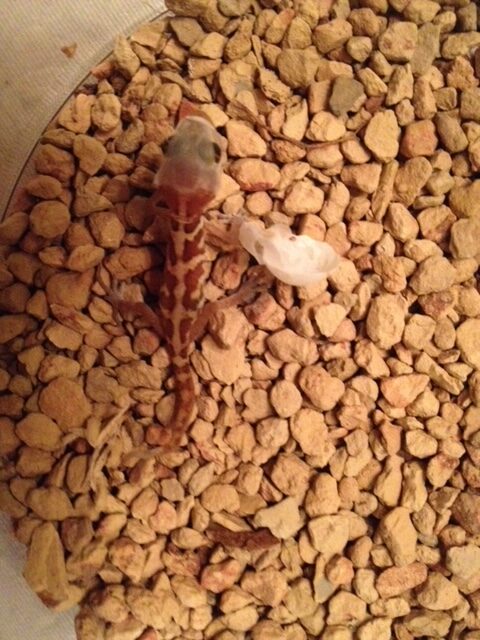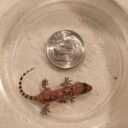In the northern hemisphere, gecko breeding season has been in full swing since the late winter. It’s still early enough in the season to begin breeding, and late enough to contemplate breeding for next season. It’s important that the geckos in question be in good condition for breeding. It’s also important for the hobbyist who is contemplating breeding their geckos to be sufficiently prepared. This article will focus on how to determine whether your gecko is ready for breeding, or whether they are appropriate for breeding at all. Next week’s article will focus on getting yourself ready to be a breeder.
Is Your Gecko Ready for Breeding?
The obvious goal of breeding geckos is to successfully produce healthy offspring. A less obvious goal is to maintain the health of the geckos that are engaged in the breeding process.

Ideally, both male and female geckos should be at least a year old before they breed, even if they are physiologically able to breed before that age. This is because at the age of a year most geckos may have reached or nearly reached their adult length, but they have likely not reached their adult weight and may still be at the stage in their lives where their growth (length and weight) are still trending upwards. Breeding takes a lot out of both male and female geckos and could have long term negative effects on a gecko who has still not reached the highest point of physical maturation.
The ideal weight for a gecko to be ready to breed depends on the species of gecko. It’s a good idea to research the species you plan to breed in order to determine from experienced breeders the standard acceptable weight for a first-time breeder.
Breeding geckos should be free of all illness and disease including active parasites, infections, abscesses, metabolic bone disease, significant weight loss, hemipenis or vent prolapse (where the male’s hemipenis or the female’s vent protrudes from the body and cannot be returned inside without intervention). With few exceptions, breeding geckos should also be free of structural anomalies or defects including but not limited to significant tail kinks, eyelid deformities (in the case of gecko species that have eyelids), limb deformities, bent spines, chronic major shedding difficulties, and toes or other body parts that have been absent since birth.
Some exceptions to this include the following: geckos that have recently stopped eating without losing a significant amount of weight can be bred as long as they are at the minimum approved weight for their species since it’s not unusual for female geckos to stop eating when they start ovulating and for male geckos to stop eating when they sense females during breeding season. Geckos that have physical abnormalities that were acquired by accident after birth, such as tail loss, or a deformed limb following a fracture. All geckos may occasionally have difficulty shedding their toes and around the eyes and this occasional difficulty would not disqualify a gecko from being a breeder.
Is Your Gecko Genetically Appropriate for Breeding?
A less physical and more murky ethical issue involves the gecko’s genetic makeup.
Morph: Some morphs, while visually attractive, bring with them a host of unresolvable neurological or medical issues. Most notable are the balance and coordination problems of the enigma leopard geckos (leading to the term “Enigma Syndrome”), and the cancerous tumors of the recently developed Lemon Frost leopard geckos. Less serious concerns have also been expressed about White & Yellow leopard geckos who may manifest balance problems, super snow leopard geckos said to be slow growers. (The majority of information about gecko morphs to breed with caution tend to be about leopard geckos since they are bred most frequently). In general, if there’s a high likelihood that breeding a particular morph of gecko is going to bring geckos with problems into the world, why do it?
Genetic abnormalities: It’s not always possible to know whether a gecko with congenital abnormalities has them due to poor incubation conditions or due to genetic mutations of the gecko in question or of the parents. A breeder who has years of experience may be able to determine which is the case, particularly if offspring of a variety of formerly successful breeders hatch with problems, which would lead them to investigate the reliability of the incubator. A new gecko breeder acquiring breeding stock would do well to avoid geckos that have congenital abnormalities. The same goes for a gecko keeper who decides they would like to breed their pet gecko. No matter how beloved or happy the gecko may be, if it was acquired with possible congenital abnormalities, it is not a good breeding candidate.
Unknown genetics: Healthy geckos of unknown genetic backgrounds will likely produce healthy offspring. However, especially with species that clearly have dominant, recessive and co-dominant genes, breeding geckos with unknown genetics contributes further to muddying the waters of genetic traits. For example, leopard geckos who possess genes for two different albino strains will produce geckos whose albino status is impossible to determine. Reputable breeders will not be interested in buying these geckos, making it more difficult to sell them.
Will Your Gecko Tolerate Mating?
The process of mating for many gecko species, involves an element of violence. There may be chasing, biting and restraining, usually on the part of the male toward the female. A female gecko may also bite a male who attempts to mate with her. It can be difficult for a novice breeder to know which behaviors are within the breeding norm and which behaviors are extreme. In general, biting that leads to significant wounds, and consistent biting of the male by the female whenever he tries to mate with her are indications that mating is not going to be a successful endeavor with this pair at this time.

Some geckos will display more “productive” behavior if separated and allowed to try again later. Some gecko species choose mates and will not breed with a partner that they haven’t bonded with. Some geckos will never successfully mate at all due to their behavior. Try to find some videos of successful gecko mating for the species you’re trying to breed and be aware of the behaviors described above which suggest that the mating experience will not be successful or safe.
Has Your Gecko Bounced Back from the Last Breeding Season?
Most gecko species lay pairs of eggs at approximately 2-week intervals for anywhere from 4-6 months. In some cases, the female gecko especially may have lost weight and may be lethargic. Fortunately, nature provides a period of several months where the gecko is not ovulating and laying. During this time period, most female gecko breeders gain weight and are once again in breeding condition when the next season starts. Some geckos, however, do not seem to recover and remain underweight and “exhausted looking” at the beginning of the new season. It is time to retire these gecko from breeding, or to at least give them a year off before trying again.

Believe it or not, it’s likely that our own preparation is more important than that of the geckos! Next week’s article will focus on what needs to happen for the breeder to be prepared for gecko breeding.



